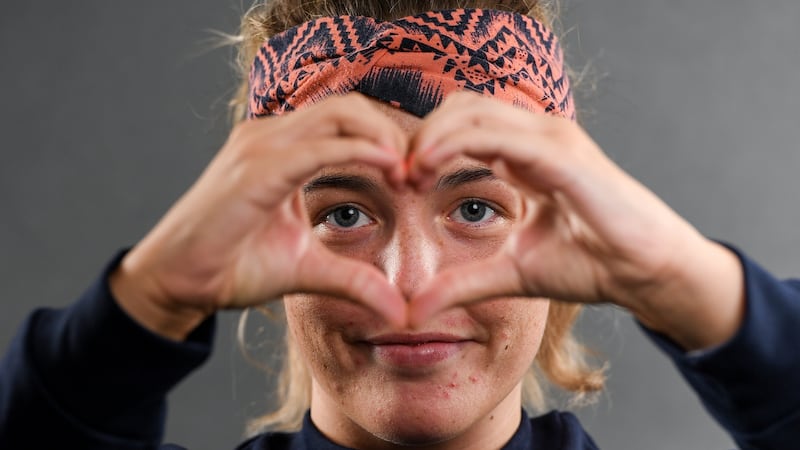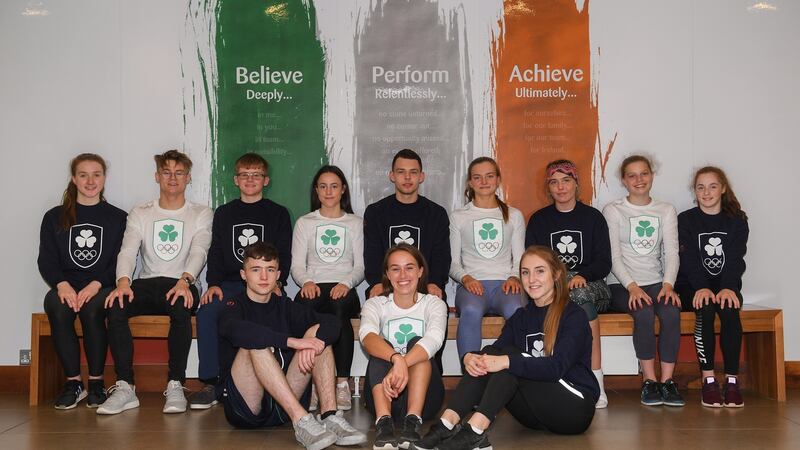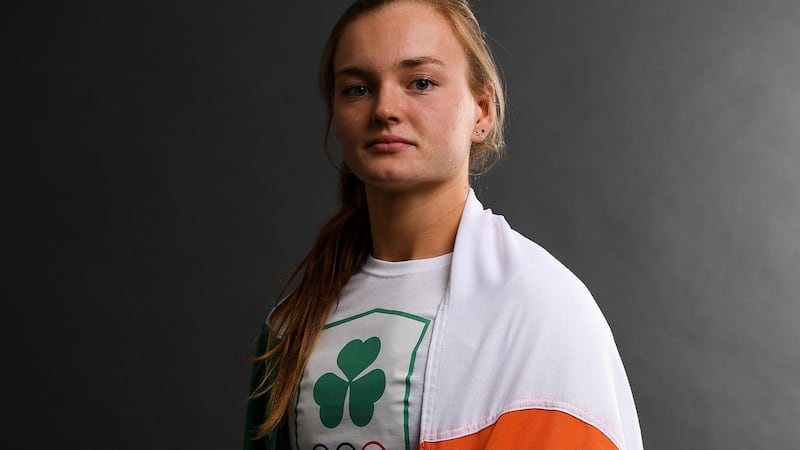Sixteen young Irish athletes travel to Argentina in October but they earned those air miles competing in nine different sports to make the Youth Olympic team. And in spite of the general pessimism around the number of girls doing sport, for the third Youth Olympics in a row there are more girls than boys on the team.
The 11 girls come from boxing, athletics, golf, swimming, diving and tennis. Sarah Keane, president of the Olympic Committee of Ireland, said this reflects the investment put into girls' sports by federations, and her plan is to continue this for Tokyo 2020 at senior level.
It’s a surprising gender balance as research by groups like the Women’s Sport Foundation UK usually find more boys than girls doing sport.
Keane, a former member of the Irish water polo team and swimmer, says these signs of change are encouraging: “It’s very positive to see so many girls competing at this level. In the junior levels now we are seeing that if they are not even, there are almost more girls on the teams. That’s across sports, that’s a positive sign as well.”
Keane says there are so many Olympic sports that girls can find an activity they enjoy and sports like athletics or boxing appeal to girls not interested in team sports.
“We’re very passionate about looking at the wider side of women in sports; we are making progress on participation and now we need to look at why girls drop out of sports. It’s different for leadership, in terms of women leading sports we are slower there but for participation we are seeing a change.”
Local impact
She says the International Olympic Committee aims to have a 50/50 gender split for Tokyo 2020 and says this support for female athletes from the top has a local impact. Keane is now also head of the European Olympic Committee's Gender Equality in Sport Commission, which gives her a platform to keep the momentum going for young athletes.
The Youth Olympics are open to athletes aged from 14 to 18 with qualifying events. The event includes educational programmes on doping and other sports debates as well as an Olympism in Action forum.
Olympic boxing only opened up to women in 2012 but the Youth team is already 2:1 girls vs boys.

In St Brigid's boxing gym in Offaly, Lauren Kelly, bronze medallist at European level, says: "I think boxing is an addictive thing, it's not a thing about hitting people, you have to be dedicated to enjoy it properly. People don't understand because I have to get rid of my social life, I'm training nearly every day."
The 18-year-old started boxing at 13 and jokes that she was a late starter as others on the team started at seven years. But she’s making up for lost time and has deferred her Garda training place for a year to allow time for boxing.
Kelly says: “It’s going well, I’m training twice a day now and I can focus much more than juggling it with study. I got bronze at the Europeans, but didn’t medal in Worlds. I lost to France and I’ll meet that French girl in the Youth Olympics, so hopefully I’ll get her back. I’ll have a second chance with her.”

Sprinter Miriam Daly, from Carrick-on-Suir, says this is the first time she's competed outside of Europe. But she's not short on event experience with a semi-final place at the European Athletics U18 Championships earlier this summer and bronze in the 100m relay at the European Youth Olympics last year.
Good crowds
She says: “I’m delighted for this, it’s very exciting. It’s a new track, we’ll see the big teams like America and Jamaica. There should be good crowds, I like that – you get hyped up. Some people don’t like it but I love it. I’m doing the 400m hurdles, you have to get your stride pattern right for that. I like it, it’s definitely challenging; you don’t feel too well after the race.”
She trains up to four times a week, and says mixing it with school work for fifth year is all about being organised. “You have to have a plan and stick to it, it’s a nice break from the books and clears your head,” Daly says.
In golf, Dubliner Lauren Crowley Walsh is one of two Irish golfers qualified. She's not nervous about the Olympics, hasn't had time really as she's away at the World Junior Girls Championship in Canada this month.
She says: “It’s always an honour to represent your country but I’m especially excited to be a part of team Ireland for the Youth Olympics. I’ve always loved playing in a team environment – it brings the best out of my game and at this event I’ll get the opportunity to mix with other athletes from different sports which I’m really looking forward to.”
Facing into her Leaving Certificate year at Piper’s Hill College in Naas, Co Kildare, Walsh says the weekends are for training. She aims for three practice sessions during the week, with gym on Friday after school and Sunday morning. Saturday and Sunday when her friends could be at the cinema or partying, she’s on the golf course working performance drills and skills.
But when she’s studying, she’s not exactly slacking off either with maths, English, Irish, Spanish, chemistry, physics and engineering on the timetable.
From the west coast, gymnast Emma Slevin is the sole gymnast on the team and the first Irish youth gymnast qualified for the Youth Olympics. Listening in on the call, her mum admits she can't watch her daughter on the uneven bars anymore but Slevin just laughs at the idea that her favourite event could be frightening.
The 15-year-old says: “The bars are my favourite, I feel it’s more natural for me compared to the beam or the floor. We repeat and practise the moves so much, you just get used to it.”
She’s known since June she was heading to Argentina, having come in the top seven gymnasts at the European Championships in Azerbaijan. Slevin says: “I couldn’t believe it, I just had a good day. I hope I have a few more good days.”
Pressure
And like the others she is balancing school work with training, fitting in homework after training sessions which end at 20:30 five days a week. She says in other countries gymnasts live in boarding schools designed around training, only emerging at the weekends, so she feels the pressure to keep up.
Her coach Sally Batley says it's fundamental to the growth of Irish gymnastics that other teenagers see athletes like Emma qualifying to events at this elite level.
In Sligo, Mona McSharry is also very aware of what other swimmers can do, but says all she’s thinking about now is her own plans. World Junior Champion in the 100m breaststroke, she’s competing in the sprint distances – 50m, 100m and 200m for breaststroke and 50m freestyle in Argentina.
McSharry says: “I’m really excited about the Olympics. It’s my last chance to go as I’m 18 already, I thought I might even miss out on this one but I made it. The list of competitions changes when you’re over 18 so it’s good to do them all now.”

In the pool six days a week, it’s an early start at 04.45am, for a two-hour training session followed by school at Colaiste Cholmcille and then back to the pool or the gym. Time management, she says, it’s just about managing your time. She makes it sound like the easiest thing in the world.
And she’s taking the same calm approach to the Youth Olympics, saying: “I try not to predict what will happen, first there’s heats, then semi-finals and finals. It’s step by step. I know after this I’m taking a year off to concentrate on swimming, I want to try for the Tokyo Olympics.”










